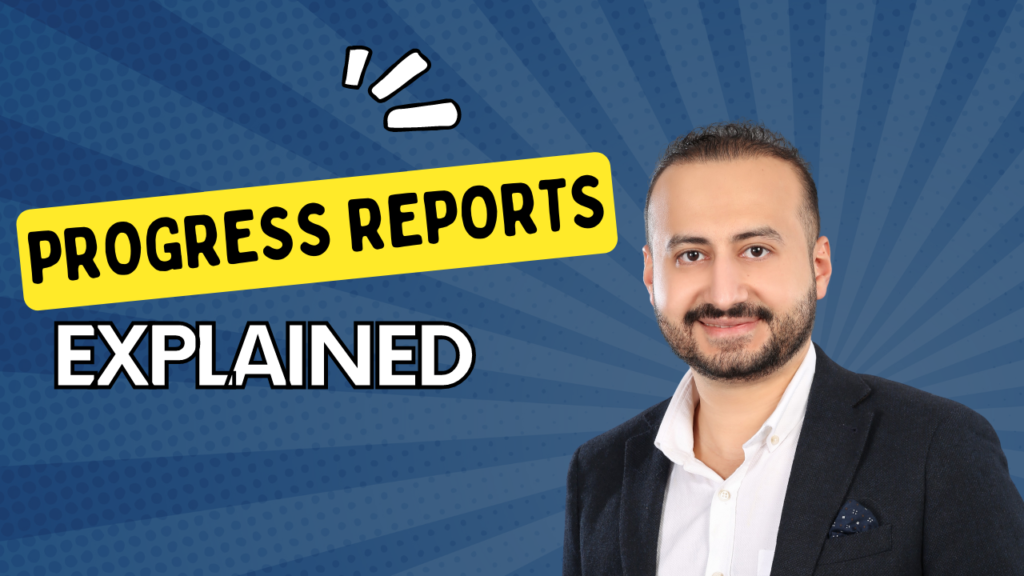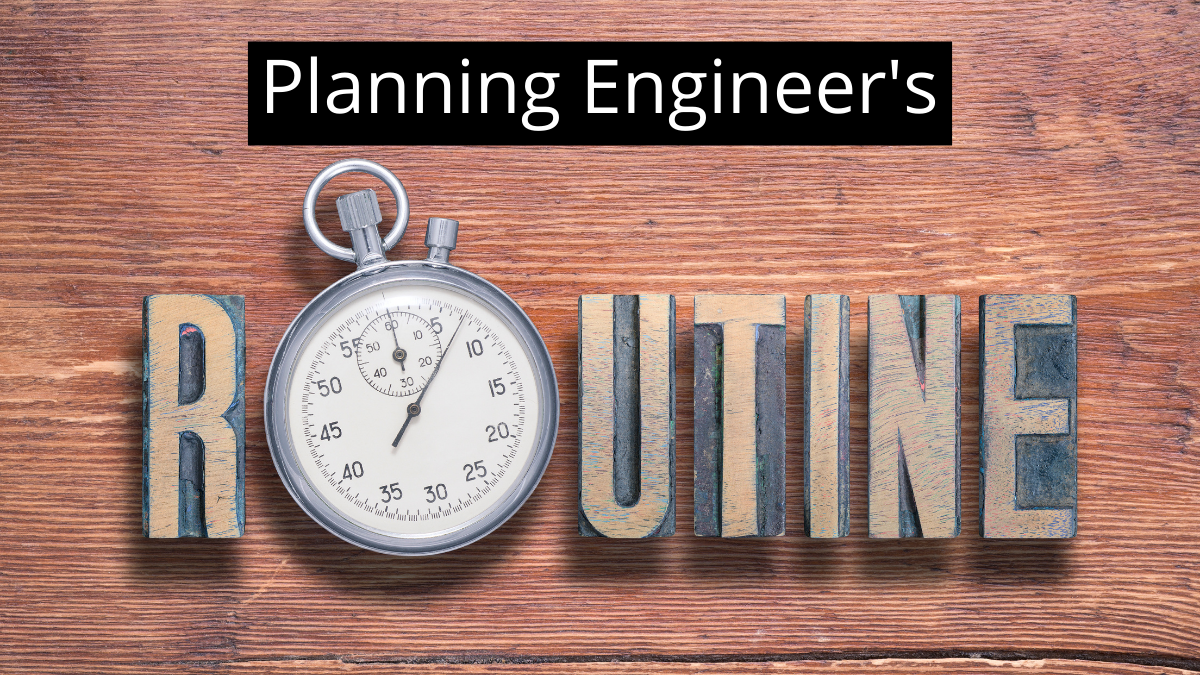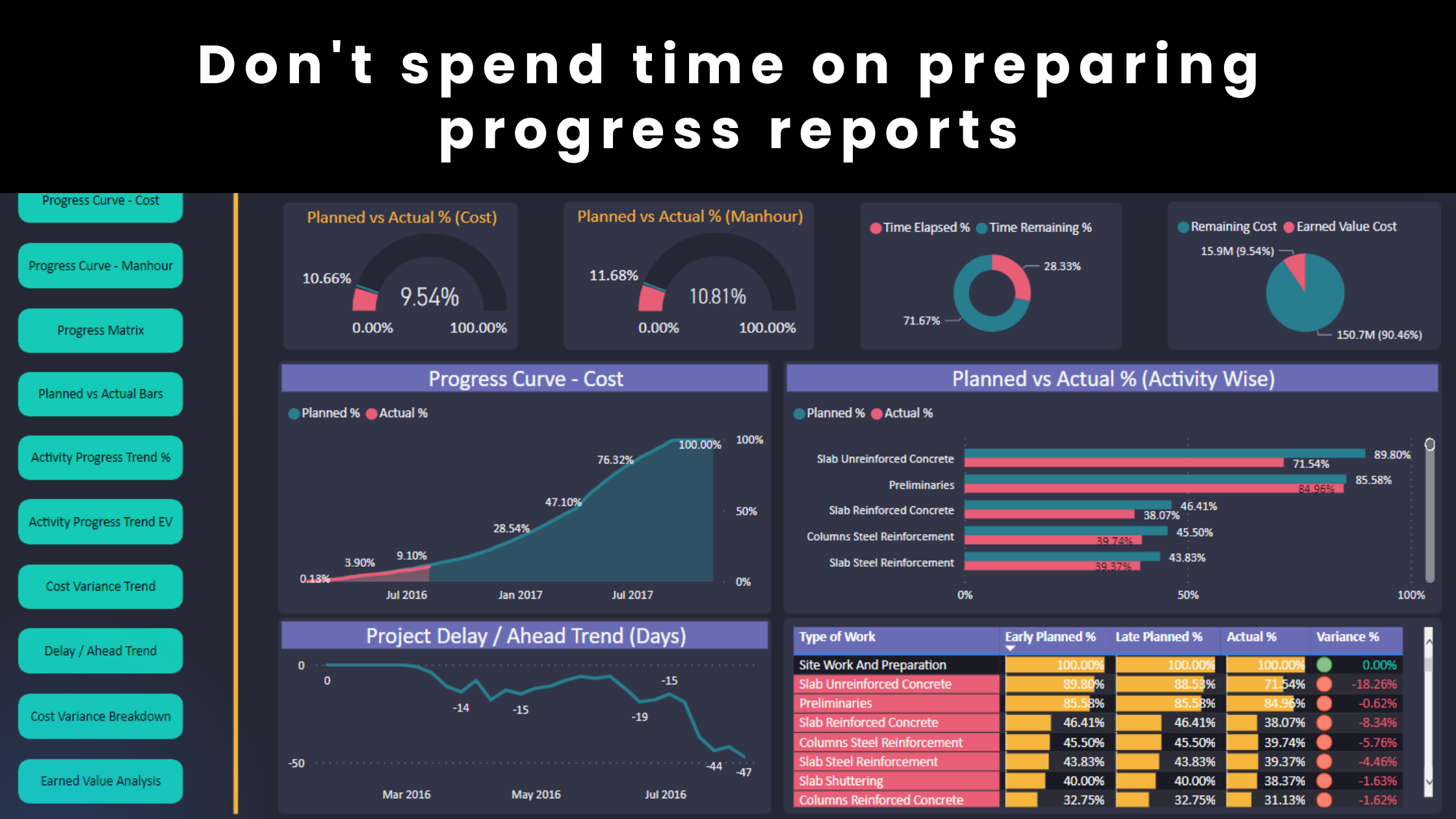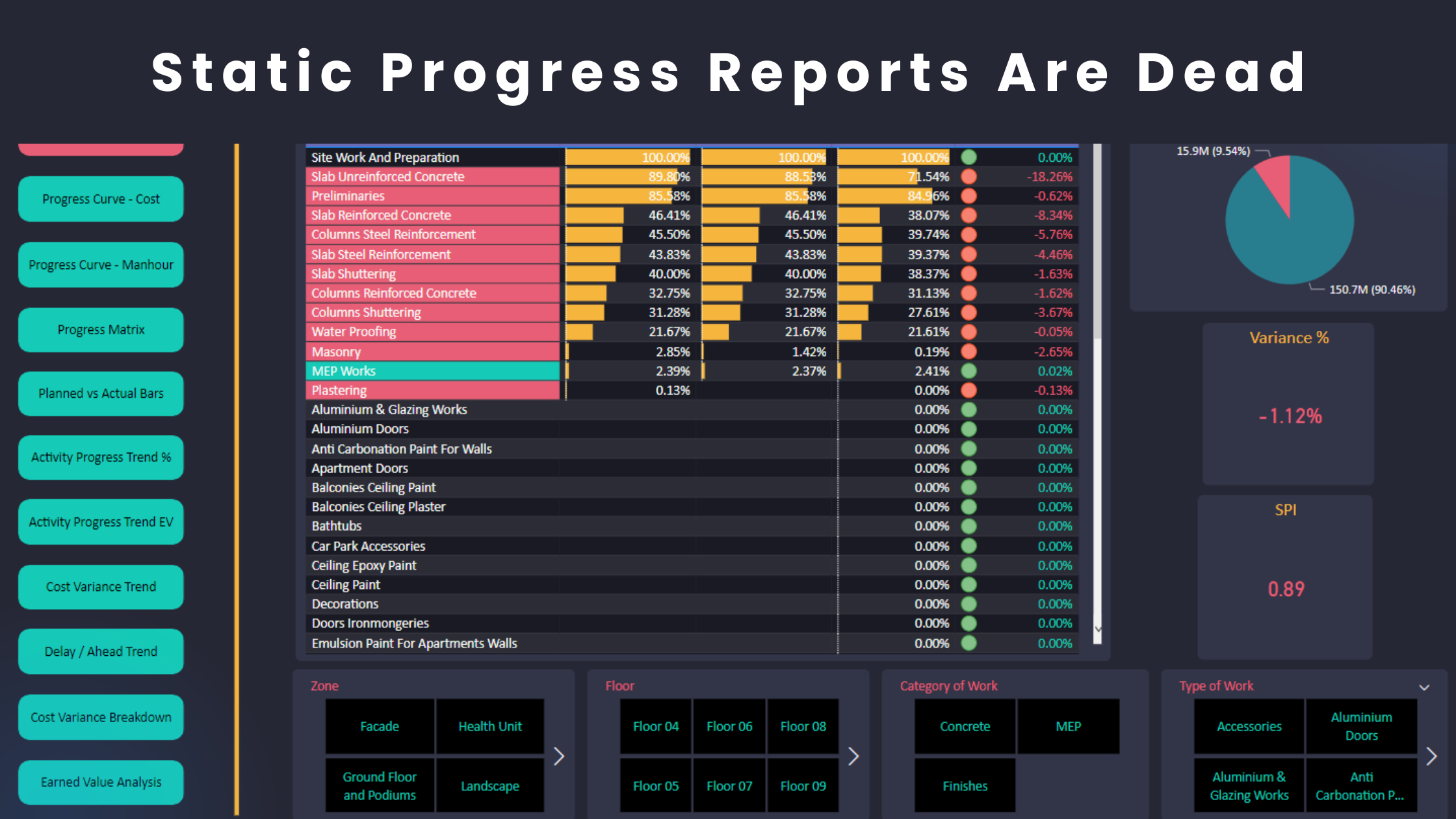The progress report is a key element that contributes to project success. Many planning engineers prepare and submit progress reports only because the Contract requires the Contractor to do so. Others think that progress reports consist of only a Primavera P6 schedule update. A progress report should be developed around the below three areas
- Progress monitoring
- Contractual requirements
- Project Records
let’s cover each point in detail
1- Progress Monitoring

Project parties need to carry out a periodic assessment of the progress status and understand how the project is performing over time. It is not effective to wait until the project end and find out that the project can’t be completed on time. Regular alarms and progress highlights are essential because they will help you identify progress issues and prepare recovery measures in a timely frame manner. It is not enough to report that the project is in delay; rather you need to explain what you will do to cope with such delay. This may include:
- Identify causes of delay
- Develop recovery plans
- Identify and manage risks
- Collect sufficient data to prepare Extension of Time claims (if the delay is beyond the reasonable control of the Contractor)
A Progress report is far more than just a Primavera P6 update. It is a comprehensive document developed to ensure the project’s success. It should include both current and future progress issues. The paintwork might not be in delay yet, but there is a risk that this activity will be in delay. For example, you placed the procurement order for paint material very late and the material will take two months to deliver. Hence, the painting activity might not be in delay yet, but there is a high risk that it will be in delay. Having a similar mindset about progress reporting is mandatory for project success. Power BI is a powerful tool that can be used in progress monitoring. In my opinion, nothing beats Power BI in the market for project control now.
2- Contractual Requirements

Modern contracts have evolved to state strict and detailed requirements for progress reporting. These requirements might include the followings:
- Progress Dashboards
- Progress curve
- Schedule Update
- Longest Paths
- Two weeks look ahead
- Site Photographs
- QA/QC Report
- Procurement Tracker
- Project Logs (Shop Drawings, Material Submittal, RFI, NCR, WIR, MIR, Method Statement, PQ, etc)
- KPIs
- Safety Report
- Manpower / Machinery Report
- Schedule Change Log
The Contract can also state the frequency of submissions (e.g. daily, weekly, monthly)
3- Records

It is not something that many practitioners think about. Planning Engineers always prepare the progress report because the Contract requires doing so. but a core reason why we need progress reports is the necessity to maintain records. Progress reports are designed to produce a snapshot of the current progress status at any point of time throughout the project life cycle. Not only should the snapshot include the performance of construction activities but also other areas such as engineering and procurement. This snapshot can be produced in a variety of forms such as photos with a date stamp, logs and daily records of available manpower and machinery onsite.
The snapshot is also crucial for the purpose of developing extension of time claims at a later stage. Planning Engineers typically use the records of progress reports to identify project delays, determine when an event has first arisen and prepare the associated Extension of Time Claims.
In Conclusion, progress reports should not be prepared around the performance of construction activities only. The document should be developed to carry out progress monitoring, fulfill the contractual requirements and maintain strong project records.
Learn More!
Check out our comprehensive courses
Regards,
Osama Saad, MBA, PMP, PSP, PMI-SP










